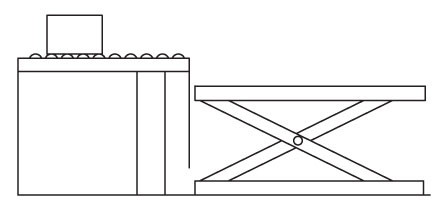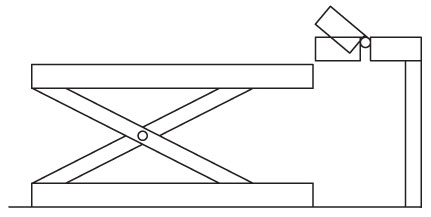SITE SURVEYS:
When considering applications, a number of installation problems can be avoided by simply visiting the intended installation site to be sure there will be no surprises on delivery day. If you cannot see the site then pass along this checklist to your customer and have them check out the site.
- Be sure the base of the unit will be mounted on a clean and level concrete or steel surface that will fully support the entire base of the unit. Be sure the concrete or steel is in good enough condition to support the unit and will hold the lag down bolts or devices.
- Be sure that that no one at the site intends to modify the base of the unit without approval from the factory.
DISCUSSION:
The bases on our standard units are simply designed to provide wear plates to protect concrete surfaces and provide lag down attachments to keep the units from moving around. Some customers have shimmed up corners, attached leveling screws or attached wheels to unreinforced bases, which turns the bases into trampolines. The units will then wobble, especially when loads are applied. If bases are not going to be fully supported, the factory must be advised at time of order so that the bases can be appropriately reinforced.
- If portability options are ordered, be sure the wheels are appropriate for the floor surface.
- Check that the electrical power at the installation site matches what is being ordered. Sometimes a requested voltage is in the customer building, but nowhere near the intended unit location. Also, size all new electrical wiring appropriately for run lengths.
- For air operations, check the actual PSI and CFM at the intended site of the unit. Long airline runs can produce significant air pressure loses. Larger diameter hoses or pipes help reduce pressure loses on long runs.
- Check the distance between remote power units and lifts and be sure hose sizes are correct.
- Review intended loading and unloading procedures for any edge loading requirements. Click to see the application data: Production Scissors Lifts White Paper & Turntable White Paper
- Verify the description and nature of the load as described in the application data section.


- Check any intended attachments to the platform that may increase edge loading requirements. See the application data: Production Scissors Lifts White Paper
- Check for any shear points that may be created. If a lift is being recessed into a pit or is rising above fixed surfaces, bevel toe guards or electric toe guards may be required to protect against shear points while lowering.
Also, check to see if the lift will raise up to a fixed surface like a conveyor line or table which may create shear points while rising. If so, the conveyor or table must have a flat face attached to it or a hinged end section to protect against these kinds of shear points.


